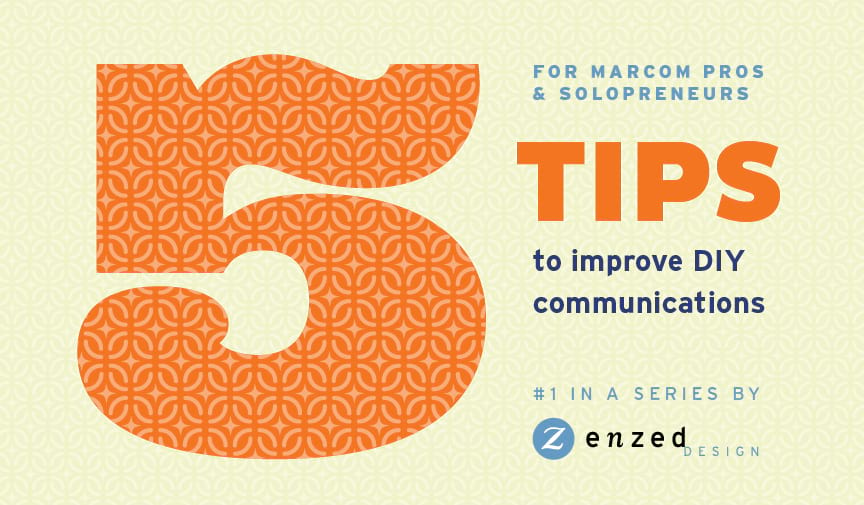As creative software becomes more accessible through subscriptions such as Adobe Creative Cloud and online platforms like Canva, clients now have the power to create better looking materials to promote their ideas and services. While most Marcom professionals and savvy small business owners can tackle the technical side of communications capably, there’s a level of finesse that only comes from formal design training and years of practice. (This is where having experienced creative partners in your corner can make a major difference in branding and marketing impact.) But by applying some basic design principles to your presentations, proposals and social media posts, you can elevate your messages and your brand. Here are five tips to help when you can’t hire a graphic designer. 1. Choose your color palette. Keep it to three colors, plus one or two lighter hues as backgrounds for sidebars (e.g. orange type in a cream sidebar). Select a dark color for legible type, a brighter color for headlines, and a medium color for subheads, pull quotes, etc. Keep in mind universal color meanings, too: red can be aggressive and signal stop or a warning; green is softer, optimistic and can indicate something is eco-friendly, etc. One
With the Olympics in Tokyo having concluded, I can’t help but think about the role of the individual and the team. We saw individual sports, like shot put, dressage, and golf...obvious team sports, such as rugby, soccer, and sculling...mini-team action in tennis doubles and beach volleyball...and the “tweener” sports — the hybrid of individual/ team competitions including gymnastics and track events. What comes through clearly when these athletes tell their stories, though, is that solo performances are best when team support is strong. Great results are collaborative. Over the arc of my career, my work approach has been similar to an athlete training within a team or with a team behind them. While clients who refer me to colleagues say, “Call Helen” (thank you!), I purposely named my company EnZed Design to umbrella the many creatives who make the project happen. There’s usually a writer, often a web designer, sometimes a photographer, illustrator, or other talent whom I creative direct and/or collaborate with. Then there’s the client and their team, who inform the process and bring their own creativity and ideas to the table. And once things are rolling, the supportive vendors — printers, signage and service providers — come





